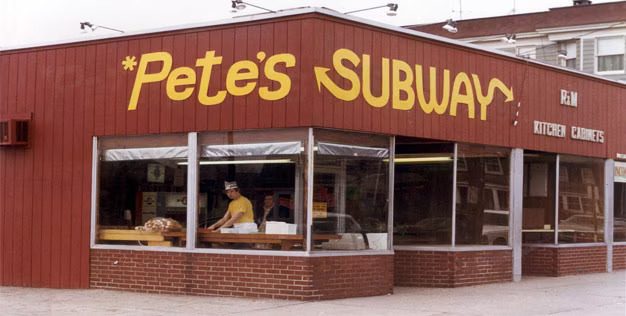History of Subway: how a small sandwich shop became worth $10bn
Subway was founded in 1965 by Fred DeLuca and Pete Buck in Bridgeport, Connecticut, USA

Subway is a well known sandwich shop that sells subs. It’s a staple of most British high streets and at one point was the most ubiquitous fast food store in the world with even more sites than McDonalds.
However, in recent weeks reports have emerged that the owners Doctor’s Associates Inc are considering selling the company for a reported $10bn (£8.3bn) with JP Morgan brought in to assist in the sale.
So how did it get to this point? Retail Sector will chart the explosive growth of the company from a local sandwich store to the biggest in the world and explain why it has been put up for sale.
The beginning
Subway was founded in 1965 by Fred DeLuca and Pete Buck in Bridgeport, Connecticut, USA. DeLuca borrowed $1,000 from Buck to start “Pete’s Drive-In: Super Submarines” and a year later they set up Doctor’s Associates Inc to oversee operations of the company. The original name did not stick for long and was finally renamed Subway in 1972.
DeLuca and Buck set out a goal of having 32 stores in 10 years. They opened their second Subway store in 1974 in Wallingford, Connecticut. By the end of 1974 the duo owned and operated 16 stores throughout Connecticut.
However, the partners realised that under the current model they would not reach their goal to have 32 stores by 1975. As a result they began to franchise the company, allowing people to open their own stores under the Subway brand.
The growth
The company experienced huge growth over the next 20 or so years. The first Subway on the west coast of America was opened in Fresno California in 1978, four years after the decision to franchise.
In December 1984 Subway opened its first location outside of the USA by opening a store in Bahrain. The company then made its way to Britain in 1996, opening its first store in the country in Brighton.
In 2004 Subway started opening stores inside of Walmart supercentres and by 2007 it had more stores in these supercentres than McDonalds.
Since 2007 the company has consistently been featured in the Entrepreneur Franchise 500 from Entrepreneur.com. By 2010 the company overtook McDonalds as the world’s largest fast food franchise. At that point the company had 33,749 restaurants, 1,012 more than McDonald’s.
The fall
However, after a rise a fall inevitably follows. In January 2015 Suzanne Greco, sister of Fred DeLuca became president and CEO. In September of the same year DeLuca passed away after a battle with leukaemia.
Since reaching its peak in 2016, having 27,129 stores in the USA alone, the number of Subway stores declined each year. In the same year it closed hundreds of restaurants in the US, the first time it had seen a net loss of locations ever, but still remained the most prominent fast food chain in the world.
However, the decline continued. 800 Subway’s were closed in the US in 2017 with around another 500 closing in 2018. This was a result of three straight years of shrinking profits and a 25% reduction in footfall since 2012.
In the US the decline was put down to changing tastes on the part of consumers, who more frequently prefer locally sourced produce and hormone-free meat served by regional start-ups.
The company closed 999 more US Subway locations than it opened in 2019, a further 1,609 net in 2020 and a net 1,043 outlets in 2021, leaving it with 21,147 locations
The revival and sale?
As of this year Subway has nearly 37,000 outlets in more than 100 countries. The company has also posted two consecutive years of profits coming out of the pandemic. Subway same-store sales rose 9.2% when compared with 2021.
So why are they looking to sell? It seems that after 60 years of ownership the family has seen the rising costs from inflation and other economic factors and the increased competition in the fast food industry and decided now is the time to cash in.
And it does not seem like they are short of offers despite the eye-watering price. According to Sky News, Bain Capital, Goldman Sachs Asset Management and TPG are among “at least a handful” of bidders for the company.
The takeover would be too expensive for some of the initial bidders to execute alone, meaning that they might be looking to team up with each other or with investors in private equity funds.
Overall, Subway has seen a huge growth from its humble beginnings in 1965 and despite a wobble in the late 2010s the company still remains a huge player in the fast food industry, hence the interest in purchasing it.

